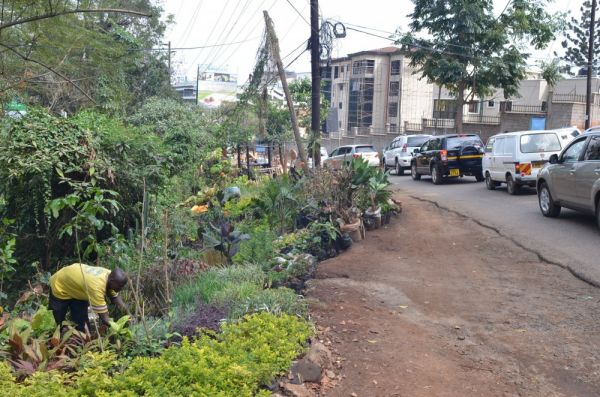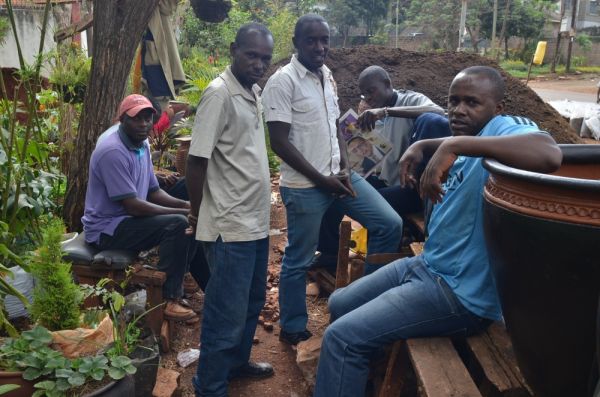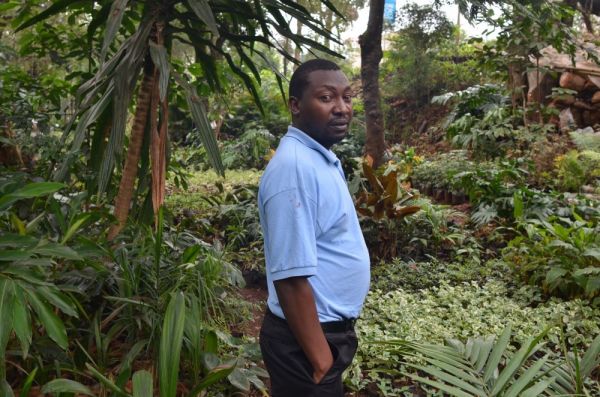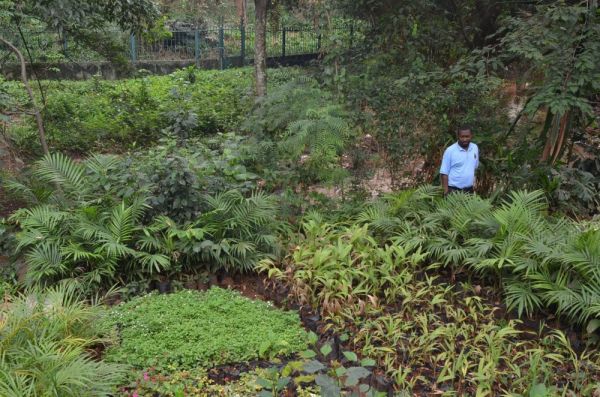Green, Lush and Carefully Tended, Nairobi’s Famous Nurseries are Losing Ground

As Nairobi widens roads and erects new apartment buildings, its famous nurseries, which operate on public land, are threatened.
“If I may ask,” the flower vender interrupts, “when did you last see a frog in Nairobi?”
I pause. This is a question I have never been asked before.
“You’ve never seen one,” he answers for me, then points to a row of concrete houses built over what was once a free-flowing river. “Because what they are doing is draining their sewage into a wetland. That’s why there’s no life in Nairobi.”
The flower vender, named Macharia Kamau, makes his living selling plants grown in a nursery in a triangle-shaped park between a fork in a busy road. Nurseries like his are all over Nairobi, their neat rows of leafy seedlings blanketing unused roadsides and riverbanks. The gardeners pay a fee to the county council to use the public green spaces and take it upon themselves to conserve the small public parks and natural waterways. It’s one reason Nairobi is nicknamed the “Green City in the Sun.”

Macharia Kamau, seated at right in the blue shirt, with other gardeners in their nursery. Developers threatened to evict them; now they are going to court.
But the nurseries, and the green spaces they preserve, are under threat. Already, two-thirds of Kamau’s park has been built over, and developers tried to evict him three months ago to get the rest. As the city’s economy and population expands, developers are putting up apartment blocks and parking lots anywhere they can. Though the parks and riversides are public and protected, developers get around this by exploiting the corruption that infects all levels of government in Kenya.
“If that area is targeted by somebody [for development],” says Lilian Muchungi, senior project officer for the Green Belt Movement, an environmental activist group in Nairobi, “they can buy their way into the government and evict people even though it is a public land.”
One vender who has already lost his whole nursery to such a deal is Peter Mbogwa. Mbogwa and over 300 other gardeners once cultivated seedlings in a protected wetland near Peponi Road, but they were evicted three years ago when a church with a title deed decided to build a luxury apartment complex. The once-lush riverbank is now vacant, and the only people allowed in are security guards hired by the church.
“By 10 to 15 years there will be no nurseries near the roads or the rivers,” Mbogwa says. “There is no space is Nairobi anymore.”

Francis Ngaru fought alongisde Wangari Maathai to protect Nairobi’s nurseries, but was evicted from a wetland by Peponi Road. Now, he has a nursery on private land, but rising rent may force him out.
Losing Nairobi’s remaining green spaces to development isn’t merely an aesthetic concern. Evicting the gardeners puts hundreds of people out of work, and building over wetlands and riverbanks creates a dangerous flood risk. Already in Nairobi, people die every year as rivers that can no longer meander naturally overspill their banks and sweep away homes. Kenyan law states that development cannot take place within thirty meters of the highest flood point, but Muchungi says that is rarely enforced in Nairobi.
Threats to Nairobi’s parks—and citizens fighting back—are nothing new. Indeed, some of the most dramatic moments in Kenya’s history sprung from such struggles. In the 1990s, Kenya’s dictator Daniel Arap Moi seized public land to glorify his regime and line his pockets. He plotted to build a massive statue of himself and a 60-story headquarters for his political party in Uhuru Park—Nairobi’s equivalent of Central Park—and planned to carve up Karura Forest, Nairobi’s largest forest reserve, to sell to private developers.
In both cases, he was stopped by a college professor named Wangari Maathai, the founder of the Green Belt Movement, who peacefully resisted the land grabbing by planting trees. Moi sent hired thugs to stop the environmentalists with violence, but Maathai, who eventually won the Nobel Peace Prize for her activism, and her supporters ultimately prevailed.
Alongside Maathai at those protests were many of the city’s nursery men, including Mbogwa. “The tear gas was the first thing,” he remembers. “Whoever was caught by the police was beaten. Even Wangari Maathai was beaten, but we just ran away and kept on planting trees.”

Some nurseries have hundreds of species of plants for sale.
Maathai died of ovarian cancer in 2011, but the Green Belt continues to fight for public space. Today, the group is helping gardeners like Kamau and Mbogwa go to court to save their wetlands and parks from would-be developers. They are involved in about ten ongoing court cases to stop development in Kenya’s wetlands, rivers, playgrounds and parks.
But Muchungi says success is rare in Nairobi because environmental legislation isn’t strong enough to reject a title deed, no matter how shadily it was obtained. She adds that it’s difficult to mobilize without an aggressive, vocal champion for the environment like Maathai to lead the way.
So some gardeners, kicked off of public land, are now moving to privately owned plots. In those places, though, rents are rising fast. One gardener on a plot that’s less than one-eighth of an acre inside a river’s flood zone says his monthly rent increased this January from 300 shillings a month to 1000. At that rate, nurseries and green space may simply be priced out in a city desperate for space to build, even on unstable ground.
To Kamau such cold calculations miss the point. “We are not talking about business alone,” he says. “We have to look for the future. I do not want my own child to hear of frogs as a myth.”
Photos by Jason Patinkin









